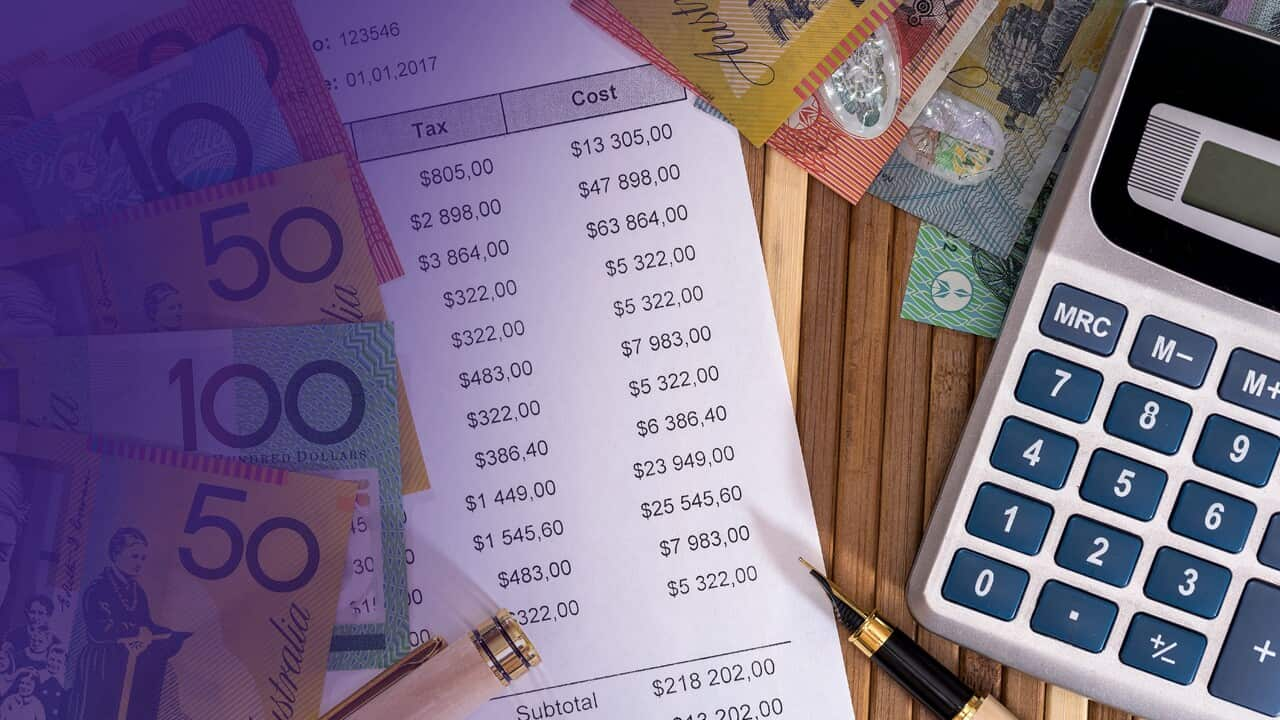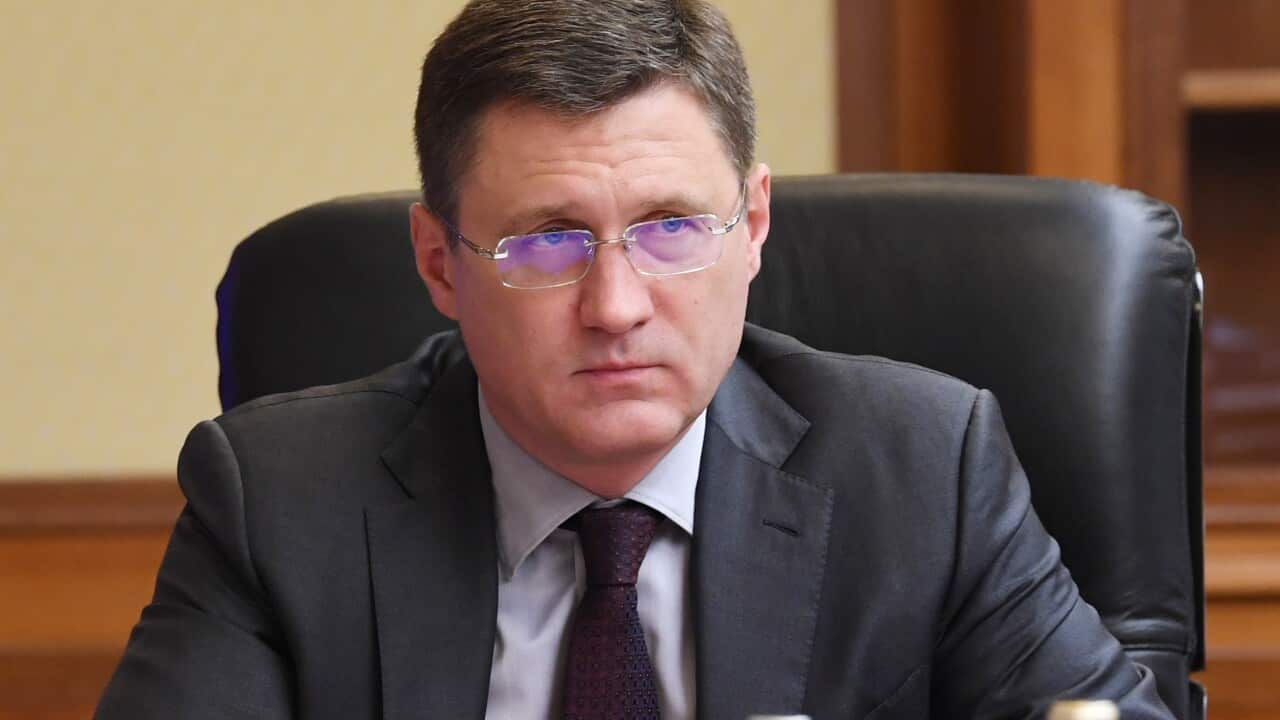The cost of living is steadily rising in Australia and around the world.
The rising prices of oil, petrol, groceries, flight tickets to a different state or country - it's all hurting the Australian hip pocket more than since the start of the pandemic in early 2020.
As the country finally begins to recover from a swathe of crises - bushfires, COVID-19, droughts and floods - there are burning questions that are being asked about the quality of life in Australia.
The most pressing question at the top of people's minds is: why has everything become so expensive?
Is there a simple answer?
The short answer is inflation, but it's not that simple.
The Consumer Price Index (CPI), which measures household inflation, rose by 2.1 per cent in the first quarter of 2022 and 5.1 per cent annually, figures released by the Australian Bureau of Statistics (ABS) show.
The quarterly and annual increases are the largest since the introduction of the GST more than 20 years ago.
AMP Capital's chief economist Shane Oliver said the inflation rate is a function of Australia emerging from COVID-19 restrictions.
“[During the pandemic] we couldn't spend on services, so we spent all our money on goods at a time when the production and supply of those goods ... were constrained," Mr Oliver told SBS News.
Since Russia's invasion of Ukraine, Mr Oliver said the "disruption has gone to a higher level".
Senior associate at the Grattan Institute's economic policy program, Alex Ballantyne, said these external influences to the economy have coincided - leading to an inevitable price hike.
"The war sanctions imposed on Russia have meant that the supply of oil is now lower than the demand, which is picking up again," Mr Ballantyne said.
"As particularly developed countries move back into a world of travelling again and using petrol a lot, what has happened is that the supply has dropped off right at a time when demand is there.
"The pandemic, floods, war - it can feel a bit biblical at times - all of this is weighing on the supply of goods ... there's many different things acting at the same time."
But Mr Ballantyne said everything seems more expensive because it's traditional household goods and services, that Australians are buying often, that have taken the hike.
"We are seeing price increases in things that households often buy frequently ... but other things haven't seen the same kind of increases, like haircuts, dinners out."
So, what's breaking the bank?
Groceries
The cost of food and non-alcoholic beverages was the second-largest household expense, only after housing costs, as reported in the 2015-16 Australian Bureau of Statistics expenditure survey.
The hardest-hit products are beef and lamb. Bega Cheese chairman Barry Irvin warned dairy prices are also set to rise.

Fruits in season for Autumn include apples, bananas, custard apples, limes, melons and strawberries. Source: SBS News / Coles
Woolworths Group CEO Brad Banducci warned reporters last month that the price of products on supermarket shelves could increase by up to three per cent over the next year.
Food producer SPC also said there would be price hikes to come for canned goods because production expenses had risen significantly. Higher prices for iron ore and wheat means more expensive tins of spaghetti.
Coffee
Some Australians could soon be paying up to $7 for a regular coffee by the end of the year, according to the president of Café Owners and Baristas Association Of Australia, David Parnham.
Cafés nationwide are struggling to absorb their increased overhead costs and may soon have to start getting customers to foot the bill.
Mr Parnham said the cost hike is due to rising transportation costs from shipping container shortages and unseasonal weather for growers driving up the price of green beans around the world.

A regular cup of coffee at a local cafe could cost up to $7 by the end of the year, according to the Cafe Owners and Baristas Association Of Australia. Source: SBS News
Petrol prices have struck record levels above $2 per litre in many of Australia's major cities over the past week.
The Australian Institute of Petroleum said the national weekly average for petrol prices jumped by 14.9 cents in the past week to a record 212.5 cents a litre, after ranging from 210.4 cents to 214 cents.
And economists expect prices could go even higher with crude oil prices remaining elevated and back above $135 a barrel.
That’s the direct impact of rising oil prices, which is largely the result of sanctions imposed by several countries against Russia, which is in the top three largest oil exporters in the world.

A man fills up his car at a petrol station in Sydney, Australia as fuel hits record prices in many areas across the country. Credit: Xinhua News Agency / Getty Images
There has been speculation Treasurer Josh Frydenberg may temporarily reduce fuel excise from 44 cents a litre.
But Deloitte Access Economics economist Chris Richardson warned such supports could further fuel inflation and bring forward the timing of an expected interest rate rise by the Reserve Bank of Australia this year.
He said it is also difficult to remove such assistance once in place.
"These bandaids go on fast but come off slow," Mr Richardson said.
Other factors affecting the price paid at the petrol bowser includes exchange rate changes, shipping and insurance costs, port charges, and terminal storage.

Annual percentage change in fuel prices over the years and the major events causing volatility. Source: SBS News / ABS
An oil price hike inevitably affects a range of other goods and services, and travel is one of them.
With fuel prices soaring, the higher expenses for airlines means the price of tickets for international flights will also be going up.
"Flights use fuel and flights might have to go up as well if the increases in the price of oil are sustained," Mr Ballantyne said.
According to data from travel website Kayak, prices for economy seats are on average above 50 per cent pre-pandemic levels based on flights between 1 February and 13 February.

The effects of sky-high fuel prices will be seen in international travel. Source: SBS News
Will prices ever fall back down?
Supply chain consultancy firm TMX Global’s executive director Marcus Carmont said expensive living is here to stay for the foreseeable future as companies continue to see increases in freight, international shipping and labour costs.
“There’s a lot of other considerations, particularly around labour and cost pressure that’s placing further emphasis on the pricing inflation as time goes on," Mr Carmont said.
He said if the price of oil is reduced, which would result in fuel prices lowering, it could lessen the blow everyday Australians are facing.
AMP Capital's Mr Oliver said the current cost of living Australians are facing is largely dependent on the war in eastern Europe - but not entirely.
"Hopefully a peace deal is soon reached and the war comes to an end, and that will remove that source of pressure, but we're still going to have supply constraints," he said.
"These supply disruptions are continuing and that's probably the biggest single factor behind higher inflation."
Meanwhile, Mr Ballantyne said the true impact of price increases could take months or years before it is fully felt by Australians.
He is hoping the issues affecting the costs of living are resolved sooner rather than later.
"We're all kind of hoping it's temporary because it would make that effect short-lived and it would make the implications of it easier to deal with for households as well," Mr Ballantyne said.
What's the government doing about it?
Prime Minister Scott Morrison said he is "very conscious" of the pressures placed on Australians as they experience an increase in everyday living expenses.
"We've been carefully considering our response to ensure that we can deliver a Budget that both addresses those immediate needs, but also ensures that we continue on with our strong economic plan for a stronger economy," Mr Morrison told reporters on Monday.
Mr Frydenberg told an Australian Chamber of Commerce and Industry forum on Friday there would be measures in the 29 March budget to help ease the burden on Australians.
He said: “There will be further measures to support families to meet the cost of living pressures, in a targeted and proportionate way.”
And while Mr Morrison can do little to change the prices in supplies, Mr Ballantyne said policymakers will need to "walk the tightrope" to stop a potential financial crisis.
Need for wage growth
He said economists are looking at whether Australians will experience wage growth to supplement the rising everyday costs they are facing.
"What we'll need to see is an increase in wage growth to try to catch up, otherwise we just get this sustained decline in the standard of living," he said.
He said government policies will need to target those Australians who are hardest hit by cost of living pressures.
"If you're trying to target people who are struggling, people whose cost of living has increased and that's really biting on their day to day finances, you want to make that support targeted," he said.
"You want to try to get any type of government support to those people, not just using a policy which is going to affect everybody such as you know fuel excise.
"Policy has a really important role to play in getting us through this passage and I think it's just a lot of pressure on the government and on the central bank at the moment."
With AAP.














